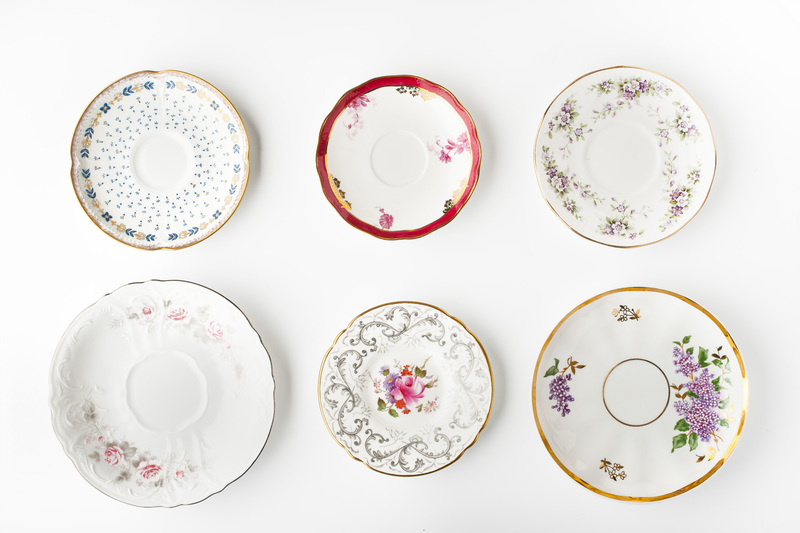The Do's and Don'ts of Recycling Pots and Pans
Are you wondering what to do with those old, worn-out pots and pans taking up valuable space in your cabinets? Getting rid of cookware in an environmentally-friendly way can be a challenge. Fortunately, this comprehensive guide on the do's and don'ts of recycling pots and pans will help you navigate your options, avoid common mistakes, and even inspire new ways to give your cookware a second life.
Why Properly Recycling Pots and Pans Matters
Pots and pans are staples in every kitchen, but what happens when they become unsafe to cook with or simply outlive their usefulness? Unlike regular cans or bottles, pots and pans are made from complex materials and unique constructions. Tossing them in the trash contributes to landfill waste and environmental degradation.
- Metals like aluminum, stainless steel, and copper are recyclable resources. Properly recycling them conserves natural resources and reduces energy consumption.
- Pots and pans may contain coating chemicals. Nonstick coatings (e.g., Teflon, ceramic) can pose problems for recyclers and the environment.
- Improper recycling can contaminate other recyclables. Knowing the right way to dispose of cookware ensures you're doing your part for sustainability.

The Do's of Recycling Old Pots and Pans
1. Identify the Cookware Material
Different recycling rules may apply depending on the material of your cookware. Common types include:
- Stainless steel
- Aluminum
- Copper
- Cast iron
- Non-stick coated pans (such as Teflon)
- Ceramic or enamel-coated pans
Most scrap metal recyclers will accept metal-based pots and pans, but coatings and handles may influence where and how they're processed.
2. Contact Local Recycling Centers
Call your municipal recycling program or local waste management facility. Ask if they accept old cookware and if any preparation is required. Many curbside recycling programs do not accept pots and pans, so you'll likely need to take them to a scrap yard or special collection event. Search online for "scrap metal recycling near me" to find local options.
3. Prepare Cookware for Recycling
Proper preparation can make a big difference. Before dropping off your pots and pans, do the following:
- Remove plastic, rubber, or wooden handles, if possible. Some centers require this as non-metal parts can contaminate the metal recycling stream.
- Clean off excess food residue to help keep facilities sanitary and efficient.
- Check for nonstick coatings. Many recyclers require the coating be stripped or will direct you to specialized facilities. Seek guidance if unsure.
4. Reuse or Repurpose When Recycling Isn't an Option
Not all cookware can be recycled through regular facilities, especially those with nonstick coatings or severe damage. Consider these creative alternatives:
- Donate gently used pans to thrift stores, shelters, or community kitchens.
- Turn pans into planters for herbs or succulents.
- Use old pots for storage in the garden or garage.
- Craft unique bird baths, clocks, or wall art from worn-out cookware.
Upcycling not only keeps pots and pans out of landfills--it also adds a special touch to your home.
The Don'ts of Recycling Pots and Pans
1. Don't Place Pots and Pans in Your Blue Bin
Never put cookware in single-stream curbside bins unless your program expressly allows it. Most local curbside programs are not equipped to handle the size, weight, or materials of pots and pans, and they may jam sorting machines, pose risks to workers, or contaminate other recycling streams.
2. Don't Ignore Coatings and Attachments
Nonstick pans, ceramic-coated cookware, and pots with plastic or wooden elements can complicate the recycling process.
- Nonstick or Teflon coatings can release toxic fumes if improperly melted down.
- Recycling facilities may refuse to accept pans with heat-resistant plastic handles or glass lids.
- Attempting to recycle a pan with a lot of attached non-metal can make it unrecyclable.
Always remove attachments and classify the coating before recycling.
3. Don't Burn or Scrap Cookware at Home
Do not attempt to strip coatings or melt down pans yourself. Nonstick coatings can release hazardous chemicals, and improper handling can endanger your health. Leave reclamation to professional recycling centers equipped to handle various materials.
4. Don't Toss in the Trash When Alternatives Exist
Sending pots and pans to landfills should be the last resort. Every year, millions of tons of metal end up in waste streams unnecessarily. Consider all options, including donation, upcycling, or recycling through a responsible facility.
Where and How to Recycle Various Types of Cookware
Metal Pots and Pans
Aluminum, stainless steel, cast iron, and copper cookware are typically accepted at scrap metal recycling centers. Some areas host "metal only" drop-off events or accept items at municipal transfer stations. When in doubt, ask the facility about their specific requirements.
Nonstick and Teflon-Coated Cookware
Most traditional recycling centers will not accept nonstick pans, because the coatings contain chemicals that can't be easily processed. Some manufacturers and brands operate take-back and recycling programs--check your pan's brand website for details. If not, seek specialized recycling centers that accept synthetic-coated items.
Ceramic, Glass, and Enamel Pots
Ceramic and glass are not recyclable with regular metals. Broken ceramic or glass cookware should be discarded in household trash, but if intact, see if local art centers or nonprofits accept these items for reuse or mosaic projects.
Tips for Extending the Life of Your Pots and Pans
Prevention is key to reducing cookware waste. Here's how to maximize your pans' functionality before recycling:
- Always use appropriate utensils to avoid scratching nonstick coatings.
- Handwash instead of dishwashing when possible, especially for nonstick or coated pans.
- Clean regularly to remove stuck-on food and prolong surface quality.
- Store properly to avoid unnecessary dents and warping.
By taking care of your cookware, you can delay its journey to the recycling center and reduce your overall environmental footprint.
FAQ: Common Questions About Recycling Cookware
Can all pots and pans be recycled?
No, not all cookware is recyclable through municipal programs. Metal pans often are, but coating materials may limit acceptability. Call your local facility for guidance.
How do I know if my nonstick pan can be recycled?
Check with the manufacturer or recycling center. Some pan manufacturers offer mail-back recycling programs for their products. Standard nonstick pans usually require special processing.
What about pans with broken handles or cracked lids?
- Metal parts can be recycled; handles and lids made from glass or plastic must be removed and processed separately.
- Glass lids are rarely accepted in standard glass recycling streams; these should be disposed of or repurposed.
Can I donate old pots and pans?
Yes, if they are still in usable condition. Many thrift shops, shelters, and food banks would appreciate them. Ensure pans are clean and free of heavy damage.

Sustainable Alternatives to Traditional Cookware Disposal
Before you recycle, consider whether you can avoid disposal altogether.
- Upcycling: Turn pans into garden planters, utensil holders, or artistic pieces.
- Gifting: Offer old cookware to friends, neighbors, or community groups via "Buy Nothing" projects or local online forums.
- Donation: Nonprofits, refugee centers, and shelter kitchens often need durable cookware for their operations.
- Manufacturer Take-Back: Some manufacturers, such as Calphalon and GreenPan, periodically offer recycling programs for used pans.
Conclusion: Make Every Pan Count
The do's and don'ts of recycling pots and pans offer a practical roadmap to ensuring that your old cookware ends up in the right place. By understanding the materials, preparing pans correctly, avoiding common pitfalls, and considering reuse options, you'll help protect the planet and inspire sustainable habits in your home.
Whenever in doubt, reach out to local recycling centers for the most up-to-date guidance, and remember--every pot and pan recycled responsibly brings us one step closer to a greener, cleaner future.
Summary Table: Quick Reference for Recycling Cookware
| Type | Recyclable? | Preferred Disposal |
|---|---|---|
| Stainless Steel | Yes | Scrap Metal Facility |
| Aluminum | Yes | Scrap Metal Facility |
| Copper | Yes | Scrap Metal Facility |
| Cast Iron | Yes | Scrap Metal Facility or Upcycling |
| Nonstick/Teflon | No (usually) | Special Programs/Manufacturer Recycling |
| Ceramic/Enamel | No | Upcycling, Disposal, or Art Projects |
| Glass Lids | No | Disposal or Upcycling |
Start recycling your pots and pans the right way today! Give your cookware a second life while promoting a sustainable future for all.